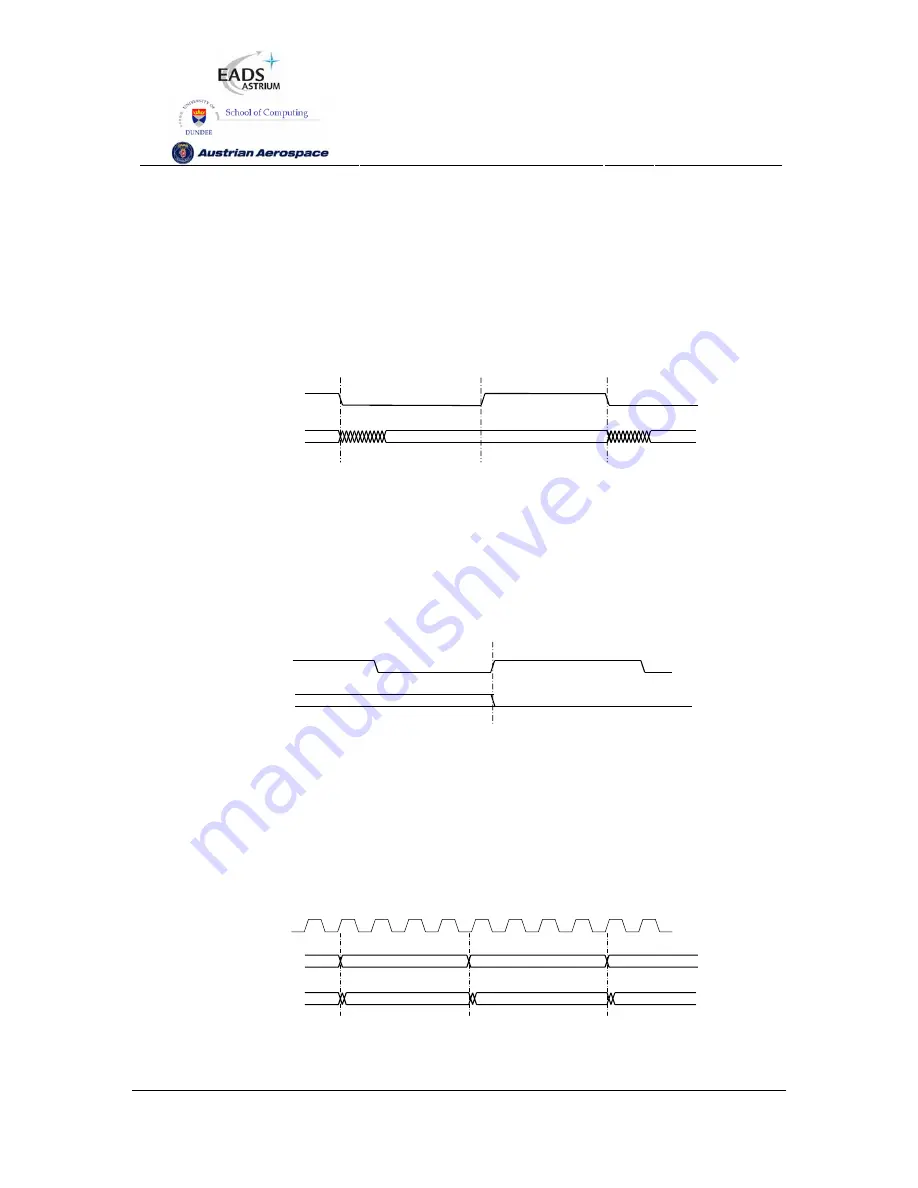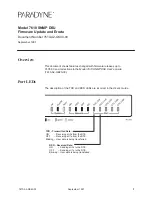
Ref.:
UoD_SpW-10X_
UserManual
Issue:
3.4
SpW-10X
SpaceWire Router
User Manual
Date:
11
th
July 2008
Preliminary
49
SEL_EXT_TIME
signal when
EXT_TICK_IN
signal has a rising edge. If
SEL_EXT_TIME
is 1 then the
EXT_TIME_IN(7:0)
inputs are used to provide the contents of the time-code. If
SEL_EXT_TIME
is 0
then the internal time-code counter provides the least-significant 6-bits of the time-code and the
EXT_TIME_IN(7:6)
inputs provide the most-significant 2-bits. When using the
EXT_TIME_IN(7:0)
inputs to provide the complete time-code, the time-code is only broadcast if it is a valid time-code i.e. if
the count in bits 5:0 is one more than the internal time register of the router (see SpaceWire standard
[AD1]). Note that only one router or node in a SpaceWire network should normally operate as a time
master generating time codes (see SpaceWire standard [AD1]).
EXT_TICK_OUT
EXT_TIME_OUT
Figure 6-4 Time-Code Output Interface
When a valid time-code is received by the router the value of this time-code (flags plus time value) will
be placed on the
EXT_TIME_OUT
outputs and the
EXT_TICK_OUT
signal will be set to zero. The
EXT_TICK_OUT
signal is set to one a short time later, once the
EXT_TIME_OUT
outputs have
stabilised, to indicate that these outputs are valid. They then remain valid until the next time-code is
received and the
EXT_TICK_OUT
signal will be set to zero.
TIME_CTR_RST
TIME_CTR Count
Figure 6-5 Time-code reset interface
When a rising edge is detected on
TIME_CTR_RST
then the time-code register is reset to zero.
6.3 STATUS INTERFACE OPERATION
The
STAT_MUX_ADDR
signal determines the output status on
STAT_MUX_OUT
as shown in Figure
6-6 and in Table 6-1.
STAT_MUX_ADDR
STAT_MUX_OUT
CLK
Figure 6-6 Status Multiplexer output interface
When
STAT_MUX_ADDR
is stable
STAT_MUX_OUT
is output from after each clock edge.















































